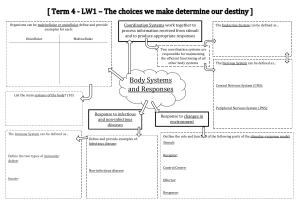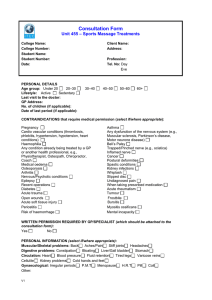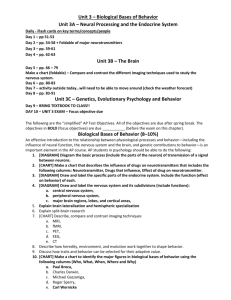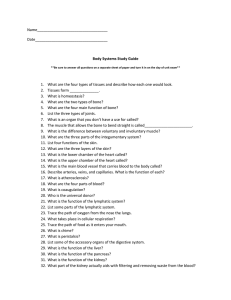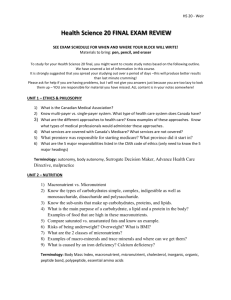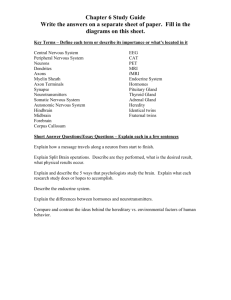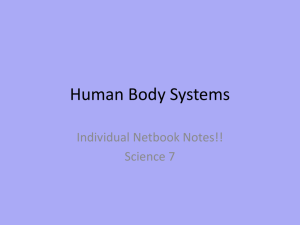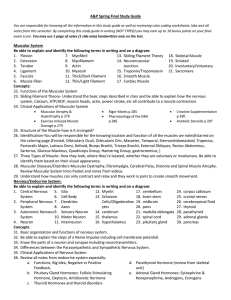15. Animal Responses
advertisement
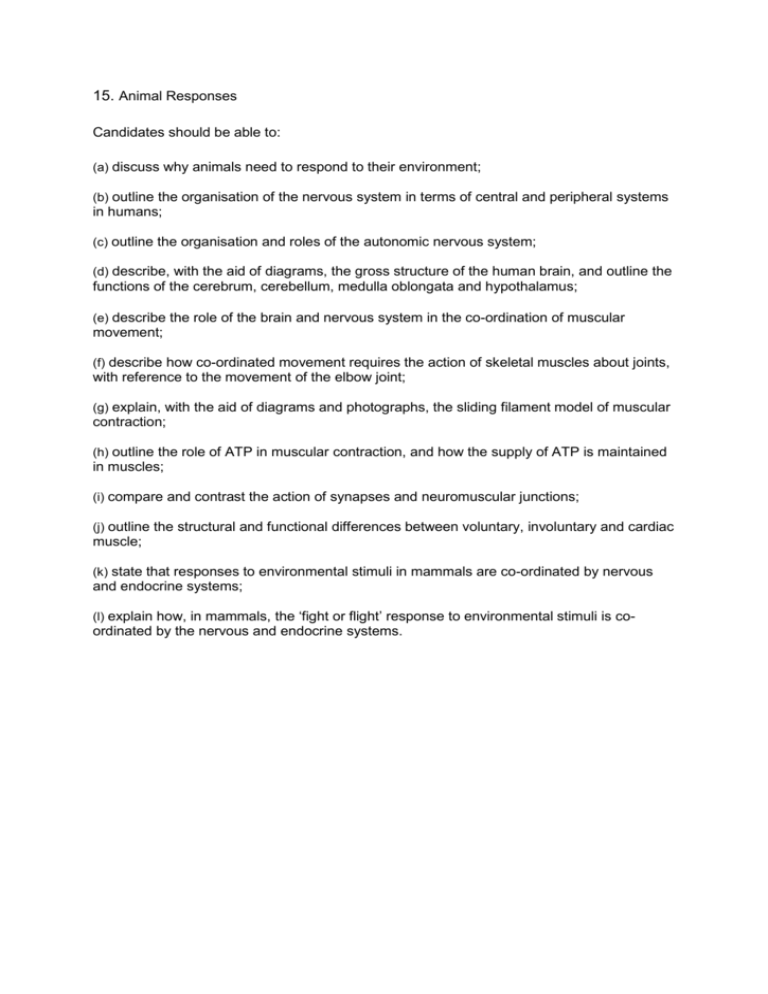
15. Animal Responses Candidates should be able to: (a) discuss why animals need to respond to their environment; (b) outline the organisation of the nervous system in terms of central and peripheral systems in humans; (c) outline the organisation and roles of the autonomic nervous system; (d) describe, with the aid of diagrams, the gross structure of the human brain, and outline the functions of the cerebrum, cerebellum, medulla oblongata and hypothalamus; (e) describe the role of the brain and nervous system in the co-ordination of muscular movement; (f) describe how co-ordinated movement requires the action of skeletal muscles about joints, with reference to the movement of the elbow joint; (g) explain, with the aid of diagrams and photographs, the sliding filament model of muscular contraction; (h) outline the role of ATP in muscular contraction, and how the supply of ATP is maintained in muscles; (i) compare and contrast the action of synapses and neuromuscular junctions; (j) outline the structural and functional differences between voluntary, involuntary and cardiac muscle; (k) state that responses to environmental stimuli in mammals are co-ordinated by nervous and endocrine systems; (l) explain how, in mammals, the ‘fight or flight’ response to environmental stimuli is co- ordinated by the nervous and endocrine systems.
